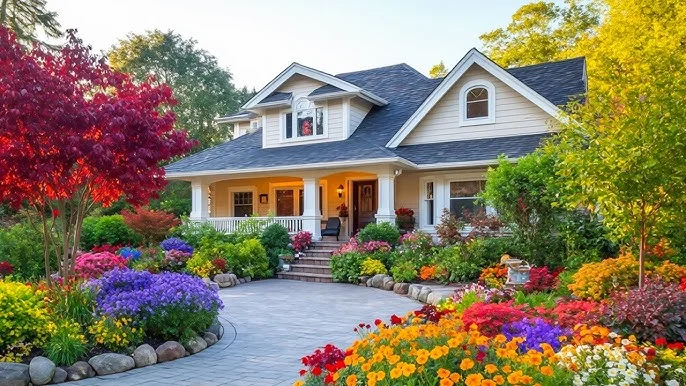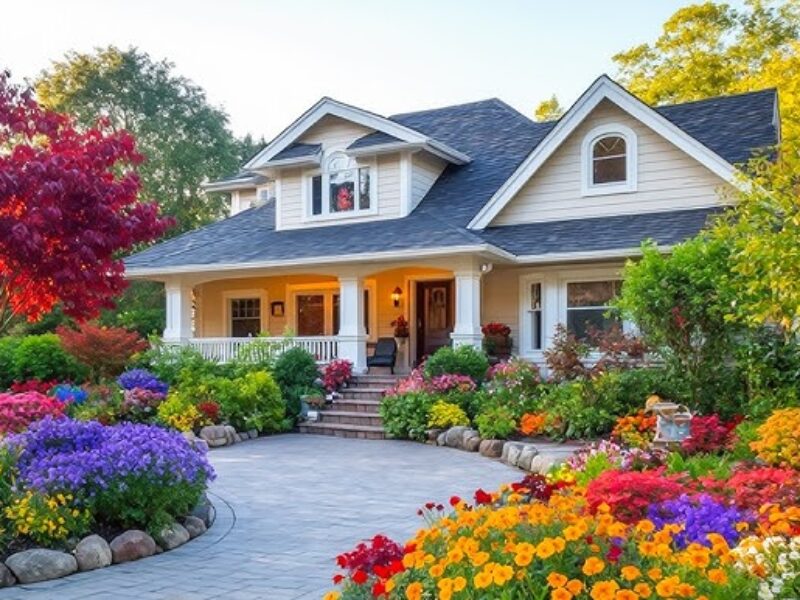Landscaping refers to any activity that modifies the visible features of an area of land. It involves the planning, laying out, and constructing gardens or outdoor spaces to enhance aesthetics and create usable areas, including tasks like planting, terrain modification, and structure erection.
Landscaping is important for several reasons, and its benefits go beyond just aesthetic appeal. It refers to any activity that modifies the visible features of an area of land, including living elements like flora and fauna, and can involve:
Planting: Selecting, planting, and maintaining plants, including trees, shrubs, flowers, and lawns.
Terrain Modification: Altering the natural landscape, such as grading, terracing, or creating retaining walls.
Structure Erection: Building or installing structures, like fences, patios, decks, or walkways.
The benefits of landscaping are wide and include such benefits as:
1. Aesthetic Appeal – Create visually appealing and harmonious outdoor spaces
Landscaping enhances the visual appeal of a property by creating beautiful gardens, well-maintained lawns, and attractive features like fountains or pathways. Curb appeal plays a significant role in creating a positive first impression and can elevate the overall look of a home or commercial space.
2. Environmental Benefits include:
Improved Air Quality – Plants absorb carbon dioxide and release oxygen, improving air quality. Trees and shrubs can also filter pollutants from the air.
Temperature Regulation – Strategically placed trees can provide shade, reducing the need for air conditioning in warmer months. This can also help regulate the temperature inside buildings, lowering energy costs.
Stormwater Management – Landscaping elements like rain gardens, permeable paving, and swales help manage rainwater runoff and reduce the risk of flooding by allowing water to be absorbed into the ground.
3. Increased Property Value – Improve the curb appeal and overall value of a property.
Potential buyers are often willing to pay a premium for a home with appealing outdoor spaces, as they are seen as an extension of the living area. A well-designed and maintained landscape can, therefore, increase the value of a property.
4. Promotes Mental Well-being
Spending time in natural surroundings has been shown to reduce stress, anxiety, and mental fatigue. Landscaping that includes green spaces, flower beds, or water features can promote relaxation and help to improve overall mental health.
5. Wildlife Habitat
Landscaping that incorporates native plants can create habitats for local wildlife, including birds, insects, and small animals. This supports biodiversity and helps preserve local ecosystems.
6. Increased Functionality of Outdoor Spaces
Thoughtful landscaping can maximize the use of outdoor areas. Patios, walkways, and seating areas can create inviting spaces for socializing, dining, or enjoying nature.
7. Soil Erosion Control
Landscaping with ground cover plants, trees, and other vegetation helps prevent soil erosion by stabilizing the soil with their root systems, particularly on slopes or areas prone to erosion.
8. Energy Efficiency
Proper landscaping can reduce heating and cooling costs. For example, planting trees on the west side of a home can block the hot afternoon sun, reducing cooling costs in summer, while evergreen trees on the north side provide windbreaks, reducing heating costs in winter.
9. Noise Reduction
Trees and shrubs can act as sound barriers, reducing noise pollution from nearby roads or other sources. Landscaping with dense foliage helps absorb and block noise, creating a more peaceful environment.
10. Enhances Community Engagement
In public spaces, parks, and community gardens, landscaping can bring people together. These green spaces provide areas for recreation, relaxation, and socialization, fostering a sense of community.
In essence, landscaping is a multifaceted tool that enhances both the functionality and the aesthetic of a space while contributing to the environment and the well-being of those who live in or use that space.





